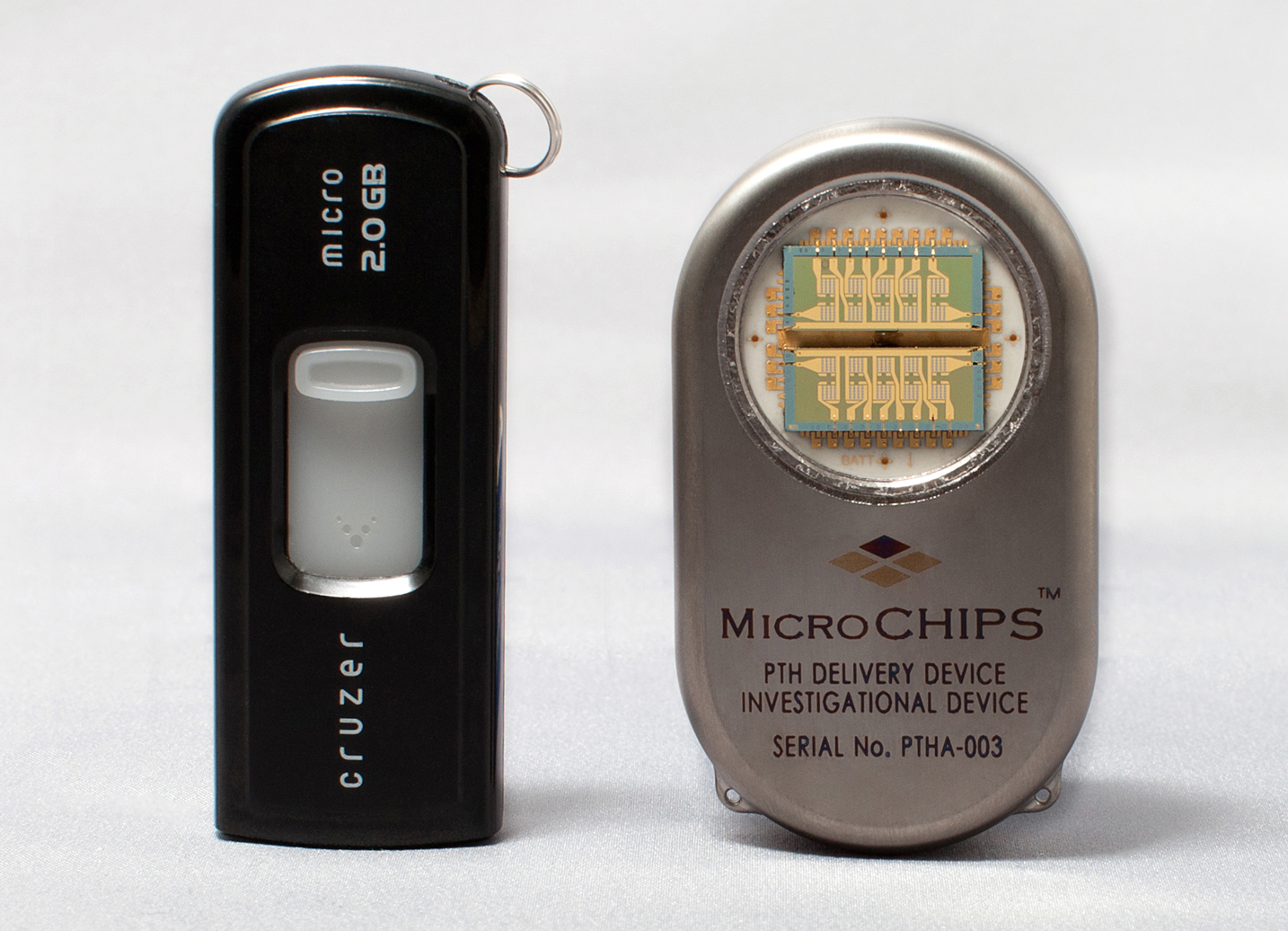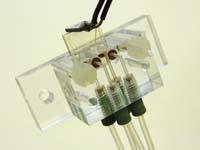First clinical session with a microchip that releases drugs on demand
2012/02/16 Etxebeste Aduriz, Egoitz - Elhuyar Zientzia Iturria: Elhuyar aldizkaria

For the first time they have held a clinical session with a microchip that releases drugs to their liking under external control. And the results have been good, according to the article published in the journal Science Transational Medicine.
The microchip is the size of a pacemaker with small stores that store the drug. The release of the drug is carried out by explosion of these warehouses. The microchip can be programmed beforehand to release the drug with some frequency or controlled by a signal sent from the outside. Although this type of microchips have been tested successfully in the laboratory, in the tests carried out with animals, it has been observed that when inserting the microchip a fibrous tissue is generated around it, and the researchers were concerned about whether that tissue would influence the absorption of the drug. Precisely, one of the objectives of the research was to check whether this tissue reduces the effectiveness of the drug.
The clinical session is carried out with a medication for the treatment of osteoporosis. In cases where this disease is very advanced and there is a high risk of bone fracture, the current treatment is a hormone to be injected daily. During the clinical session, eight Danish women incorporated microchips in the lumbar area and, despite the formation of fibrous tissue around the microchip, observed that the microchip had the same efficacy as daily injections and that treatment improved bone production.

Gai honi buruzko eduki gehiago
Elhuyarrek garatutako teknologia




